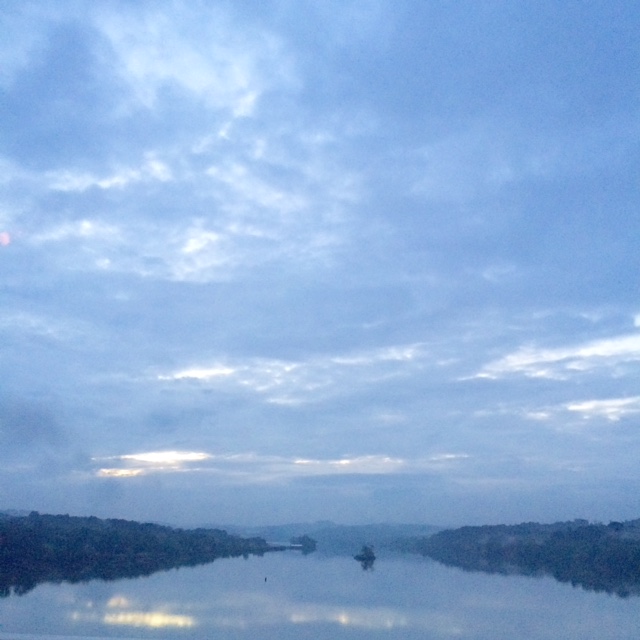|
I heard the girls were heading south on I-75, known in the mountains as Hillbilly Highway because it takes people home on weekends and holidays.
Get off and take the Valley View Ferry, I urged. I used to do it whenever I could, from Louisville to Eastern Kentucky. Stop at the Kentucky Horse Park, I insisted. Don't forget the Boone Tavern at Berea. I sometimes forget how much I love that part of the world. * * * It's not Appalachian, per se, but treat yourself to the Gary Bartz version of "I've Known Rivers," adapted from the Langston Hughes poem, "The Negro Speaks of Rivers." https://www.youtube.com/watch?v=l9WCFQzznC4
Ed Martin
8/19/2015 04:18:07 am
Her talent, her "eye," is undeniable. I recall attending a weekend conference on civil rights at Berea, the students running the inn as part of their education. Long ago, but still in the memory bank. This trip should be a long-time memory for Anjali and her Mom.
George Vecsey
8/19/2015 12:59:57 pm
Ed, thanks., The students feel part of the Appalachian region. We had friends from Berea -- the McLain Family Band -- and their friend Jean Ritchie moved back to KY from Port Washington and recently passed "back home." GV
Brian Savin
8/19/2015 12:51:36 pm
Got a small connection to that area that is meaningful to me. A year after the Civil War ended, my wife's Great x4 Grandfather had a daughter who had married a Rogers of Cornwall Connecticut. Her husband's family had helped set up Beria College and he was offered a job to teach mathematics after his discharge (it may have been for a new school they wanted to set up with the same standards of neither sex nor race discrimination). He brought his wife and five (pre war) children with him to start a new life. As fortune would have it, after surviving the War, upon arrival he soon died of "a fever of the brain." Great x4 Grandfather Jacob Scoville took an ox cart from Connecticut to Kentucky to bring his daughter and grandchildren back east. In those days, a widow with children had a tough time surviving. He and his brother Samuel built a house for them near the lake so they could take in boarders. There was a train that came up from New York and Cornwall was a vacation destination, as it is now. Jacob gave his farmhouse to his son and moved in with his daughter to help out. That new home, built in 1868, is the house we live in today in our retirement. I'd like to visit that area some day and look forward to any further photos by Anjali.
George Vecsey
8/19/2015 12:56:29 pm
Brian, you should really visit Berea. The inn is terrific...and the school is different from any other place. So much within a short drive -- Shakertown.....Lincoln's birthplace.....Mary Todd home in Lexington (don't miss)....and Laura and Ani saw Funny Cide at the KY Horse Park near Lexington. They would love to meet you at Berea, GV 9/10/2015 12:42:03 pm
Now hacking facebook account or fb account password rocover very easily and free of cost. If you don't know how to hack a facebook account then visit this webpage. 11/17/2015 10:16:09 pm
I want to to thank you for this excellent read!! I definitely enjoyed every little bit of it. I have you book-marked to check out new things you post… 3/22/2016 06:03:33 am
Magnificent goods from you, man. I have understand your stuff previous to and you are just 6/27/2016 09:15:06 pm
Want to relocate in Melbourne? and you are looking for removals tor movers for all things needed to transfer in biggest Cities then you came to the right company. Comments are closed.
|
Categories
All
|










